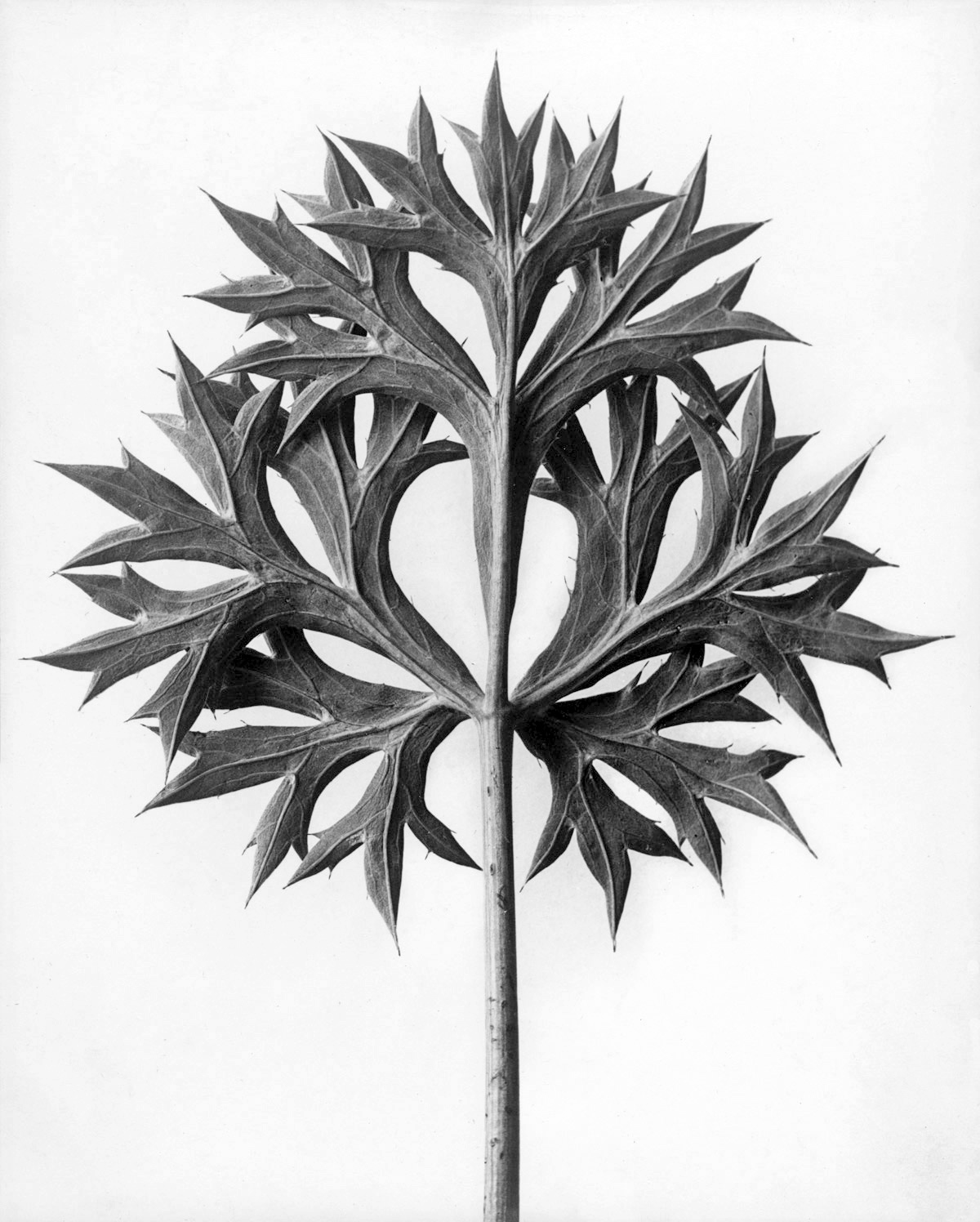READING A
WAVE
He sees a wave rise in the distance, grow, approach, change form and color, fold over itself, break, vanish, and flow again.
Isolating one wave is not easy, separating it from the wave immediately following, which seems to push it and at times overtakes it and sweeps it away; and it is no easier to separate that one wave from the preceding wave, which seems to drag it toward the shore, unless it turns against the following wave, as if to arrest it.
April 2017

Text: Mr. Palomar; Italo Calvino
Image: Karl Blossfeldt; Urformen der Kunst

Then, if you consider the breadth of the wave, parallel to the shore, it is hard to decide where the advancing front extends regularly and where it is separated and segmented into independent waves, distinguished by their speed, shape, force, direction.
In other words, you cannot observe a wave without bearing in mind the complex features that concur in shaping it and the other, equally complex ones that the wave itself originates.
April 2017
These aspects vary constantly, so each wave is different from another wave, even if not immediately adjacent or successive; in other words, there are some forms and sequences that are repeated, though irregularly distributed in space and time.
Since what Mr. Palomar means to do at this moment is simply see a wave — that is, to perceive all its simultaneous components without overlooking any of them — his gaze will dwell on the movement of the wave that strikes the shore until it can record aspects not previously perceived; as soon as he notices that the images are being repeated, he will know he has seen everything he wanted to see and he will be able to stop.
![]()

MARBLE AND BLOOD



Horace Kallen
Suppose you take the world as it comes. Suppose you take the world at its face value. Then reality is what you know it as. You find the substantive parts of it connected by relations as truly present and as existent as the parts themselves.
You find transition and change, continuity and discontinuity, routine and surprise, multiple unities of manifold kinds, realities of various stuffs and powers — all connected with one another by transitions from next to next, each standing away, alone, unmitigated, unincludable, now from some things, now from others.
You find movement. You find beginnings, you find endings, you find continuity and you find transformation. In a word, the world of the daily life which we touch and see and hear and smell and taste, which we struggle against and work together with, need be none other than we experience it to be.











Karl Blossfeldt — Urformen Der Kunst
Ian Hamilton Finlay
SERPENTS AND
SERPENTS AND
SKULLS

Zephyr INS 6
1975–6
1975–6

Shepherd Lad KY 216
1975–6
1975–6
Franz Brentano
The objects of sensory experience are deceptive ... We have no right ... to believe that the objects of so-called external perception really exist as they appear to us. Indeed, they demonstrably do not exist outside of us. In contrast to that which really and truly exists, they are mere phenomena.
William Carlos Williams
This is the trap — either what we seek is within the bounds of the understanding or beyond it. If outside it does not exist for us, much less for our imagination; if inside it is bounded by that and must be so defined before it can be conceived — this precedes all further progress.
The Embodiment of Knowledge

Laconic, 1987

Sail/Waves 1 — postcard design

Let Perish the Money Tyrants
1982
1982

Peace to the Cottages —
War to the Arts Council
1982
War to the Arts Council
1982
︎
I know noble accents
And lucid, inescapable rhythms;
But I know, too,
That the blackbird is involved
In what I know.
Wallace Stevens
Thirteen Ways of Looking at a Blackbird
© novella oliana 2024